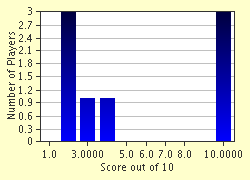Quiz Answer Key and Fun Facts
1. Mac OS X Tiger (10.4) had lots of new improved features over its predecessor, Panther (10.3). One of these was Spotlight. What was it?
2. With a feature called Dashboard, Mas OS X Tiger used a mini-applications layer based on HTML, CSS, and JavaScript. What were these mini-applications known as, in Tiger?
3. Mac OS X Tiger (10.4) came with QuickTime 7, the multimedia framework that encoded and transcoded video from one format to another, and decoded video and audio for playback. Quicktime was used in iChat AV 3, the instant messaging software bundled with Tiger. What was new about QuickTime and iChat in Tiger?
4. Apple sought to improve accessibility to handicapped users, so as part of the Universal Access suite, Mac OS X Tiger added an improved built-in screen reader, called what?
5. When Tiger was first released, Apple hyped up an application that intended to allow end users who were completely unfamiliar with programming or shell-scripting to automate repetitive tasks and possibly create small applications that would be of use to them. What was the name of this feature?
6. Included in the Safari 2.0 web browser in Mac OS X Tiger (10.4) were several new features. Three of those are listed below; which is something that was available in earlier versions?
7. Mac OS X Tiger (10.4) was released at a time when there were major changes to the hardware used by Apple for its personal computers. Which of these statements is FALSE?
8. It's important to understand that at the core of Mac OS X is Unix (specifically Darwin). What security feature in particular was added to Tiger to make it more like other modern Unix-based systems at the time?
9. Apple made additional improvements to improve the security and performance in Mac OS X Tiger. Which was NOT one of these?
10. In addition to many new features, Mac OS X Tiger (10.4) was the last version of OS X to feature Classic Environment, an emulation layer for running legacy Mac OS 9 ("classic") applications. Which of these statements is NOT true about Classic Environment?
Source: Author
gracious1
This quiz was reviewed by FunTrivia editor
WesleyCrusher before going online.
Any errors found in FunTrivia content are routinely corrected through our feedback system.

